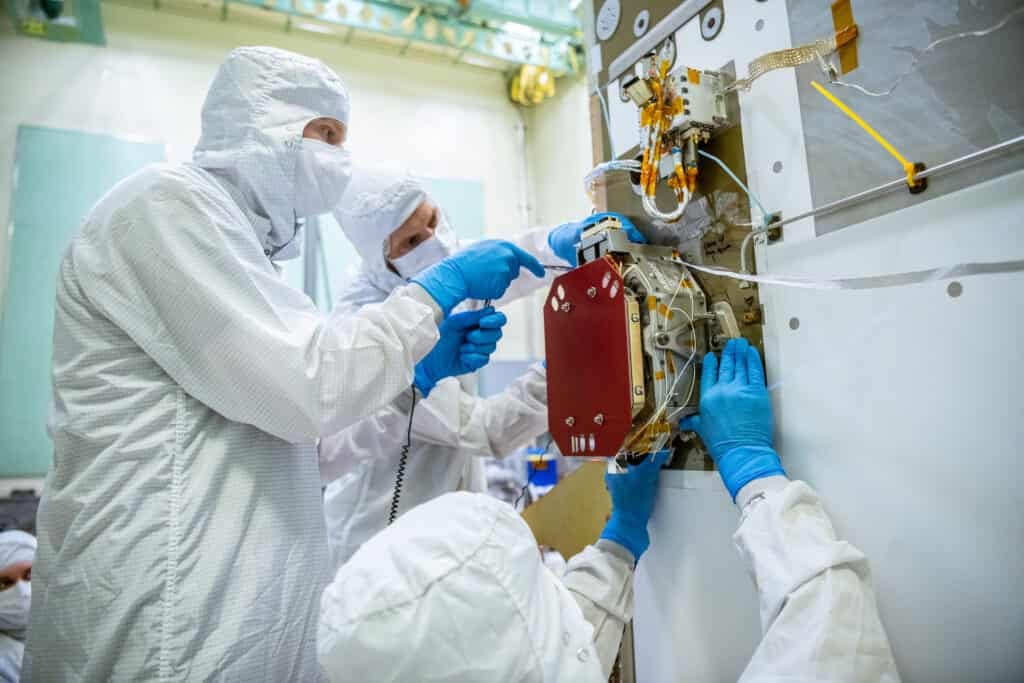
NASA’s climate satellite PACE was successfully launched from Cape Canaveral in the early morning of February 8th. PACE will perform measurements on aerosols, plankton, and ocean color. Aerosols are a large unknown factor in climate models. The Dutch instrument SPEXone will change this through measurements of aerosols in the atmosphere. SPEXone was built by SRON and Airbus Netherlands B.V., with support from TNO.
Why you should read this
Particulate matter not only has many harmful effects on human and animal health, but also on climate change. The sources of this pollution are not always easy to trace, nor is the exact impact. With equipment from SRON and Airbus Netherlands, this should now change.
Aerosols are small particles such as soot, ash and desert dust in the atmosphere. They have a major influence on climate change and air pollution, but their precise impact is unclear. As a result, the global warming scenarios for the year 2100 are several degrees apart. Most aerosols reflect light, creating a cooling effect. But some have a warming effect through absorption.
Climate models
The SPEXone space instrument will determine the properties of aerosols, such as size, composition, shape, and their absorbing and reflective capacity. “This way, we can map out which aerosols are in the atmosphere and how strong their effect is on global temperatures,” says Otto Hasekamp (SRON). “That makes it possible to reduce the margins in climate models and predict more accurately what will happen given certain greenhouse gas emissions.”
Cloud formation
Aerosols also influence the climate through their interaction with clouds. Hasekamp: “Water can condensate on aerosol particles, creating cloud droplets. More aerosols give rise to more cloud droplets, and this causes clouds to reflect more light. That produces a cooling effect.” Not all aerosols are equally suitable for forming a cloud droplet. SPEXone provides more insight into this. The researchers then also study the relationship between the amount of aerosols (SPEXone instrument) and the amount of cloud droplets (HARP-2 instrument) to determine how strong aerosol affects clouds.
SPEXone
“SPEXone measures the polarization of sunlight reflected by the atmosphere from five different angles,” says Wencke van der Meulen, business director of atmospheric monitoring instruments at Airbus Netherlands B.V. “From these measurements, we derive all kinds of information about the aerosols present, such as what they consist of, their size and shape and whether they absorb or reflect light. This provides crucial information for climate models, which form the basis of international policy on climate change.”
Consortium
Harm van de Wetering, director of the Netherlands Space Office (NSO), is proud of this Dutch contribution to the NASA mission: “This is a wonderful example of collaboration within the Dutch space sector and between The Netherlands and the United States. NASA is also very enthusiastic about this. Once again, our Dutch technology has an important share in global climate research. This is useful, inspires, and makes us proud.”
SPEXone is developed by a Dutch consortium of SRON and Airbus Netherlands B.V., supported by opto-mechanical experts from TNO. SRON and Airbus are responsible for the instrument’s design, assembly, and testing. The scientific leadership is in the hands of SRON. TNO has built the free-form optics. The concept behind SPEX was developed by Frans Snik (Leiden University). The NOVA lab in Dwingeloo has polished a number of mirrors. SPEXone is a public-private initiative made possible by the NSO with resources made available by OCW and SRON/NWO-I and supported by private investments from Airbus Netherlands B.V.

